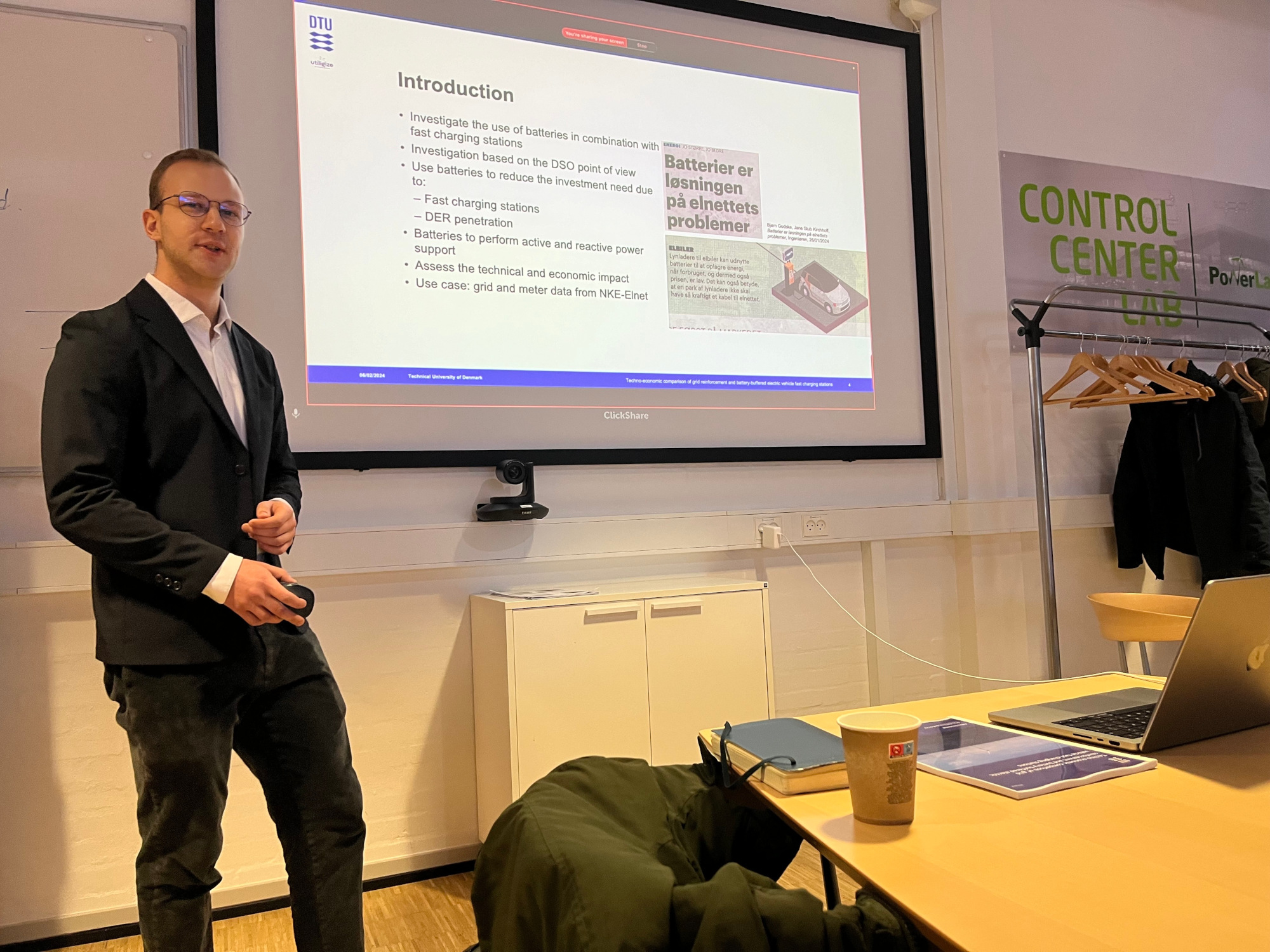Batteries reduce grid reinforcement costs, but only when used in hybrid with new transformers
6 February 2024

Integrating batteries with new transformers can slash grid reinforcement expenses, offering a cost-effective solution for supporting increased electric vehicle (EV) charging demand. This finding emerges from an in-depth analysis conducted by Utiligize employee, Amay Boudellal, in collaboration with the Technical University of Denmark (DTU).
Drawing on empirical data from a Danish distribution network, the study showcases how prohibiting Distribution System Operators (DSOs) from owning batteries is an unnecessarily expensive policy for society. Here are the key takeaways:
- Sole reliance on batteries for grid upgrades is always more costly than transformer and cable upgrades, even with projected steep declines in battery costs towards 2050.
- A hybrid approach that combines the installation of new transformers and cables with battery systems is the most cost-efficient network upgrade path.
- For example, for an additional grid capacity requirement of 800kVA, the most expensive strategy would be to deploy an 800kVA battery. In contrast, adding cables and an 800kVA transformer is on average 80% cheaper, while the most economical option involves pairing a 400kVA transformer with a supplementary battery that reduces total cable and transformer costs by a further 10%.
- Batteries reduce congestion most when connected to a 10/0.4kV substation. Batteries connected to the primary side allow support for MV cables but require specific power electronics, while batteries connected to the low voltage side allow for less MV cable support but can reduce transformer congestion and, significantly, solve voltage issues through reactive power control. Batteries placed in distribution cabinets along the feeders cause more voltage violations than they solve.
- Battery CAPEX and OPEX costs, including maintenance and energy losses, are larger than all equivalent transformer costs unless employed in a hybrid model.
- Value stacking, where the battery is additionally used for primary frequency reserves and balancing, is an unattractive proposition for DSOs, as future local congestion is less predictable than today – it happens at all hours, not just in the evening – and activation based on external market factors might end up causing more of these local issues.
- From a regulatory standpoint, allowing DSOs to own and operate batteries solely for congestion management is a clear benefit for society.
- The conclusions are robust throughout a wide range of sensitivity analyses, including component and spot prices.
Amay presenting his study:

See the full report here:
